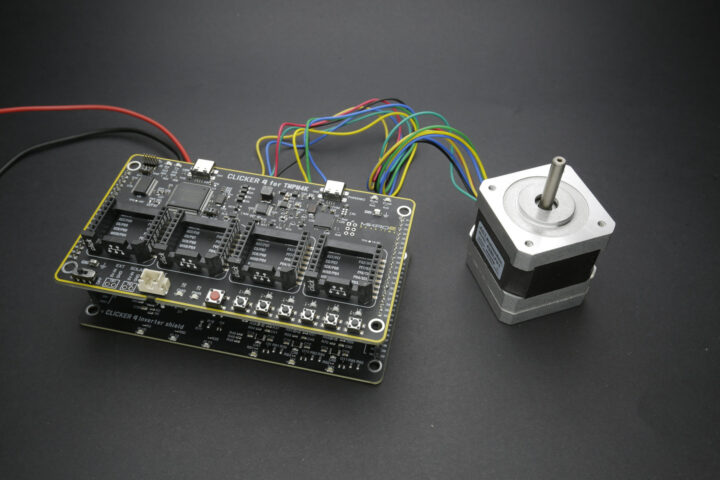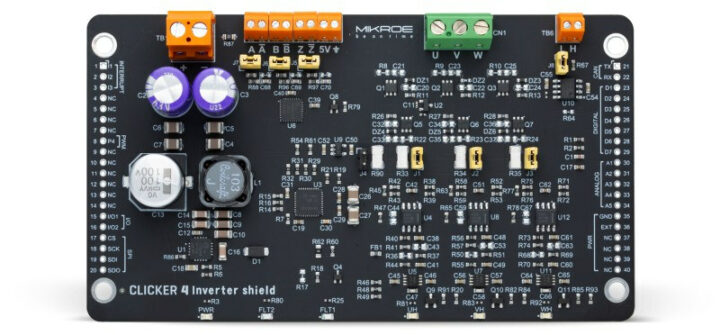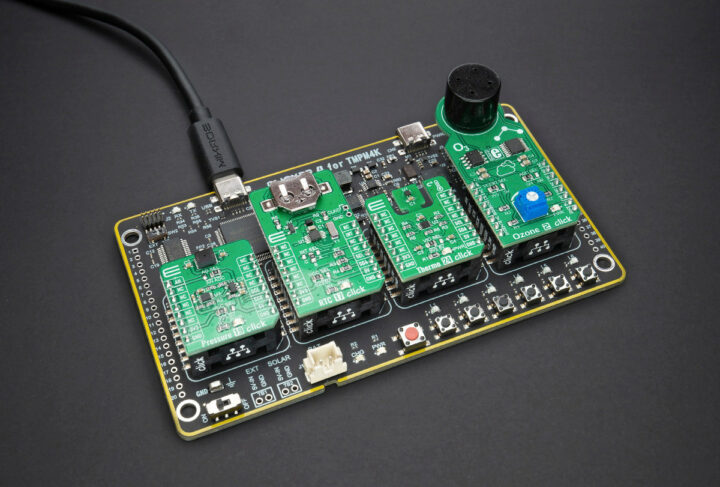Toshiba and Mikroelektronika have launched the Clicker 4 for TMPM4K development board equipped with Toshiba M4K Arm Cortex-M4 microcontroller for motor control, as well as four mikroBUS sockets for MikroE Click expansion boards.
The Clicker 4 for TMPM4K board is also fitted with an on-board CMSIS-DAP compliant Debug Unit based on Toshiba’s TMPM067 MCU, extension connectors, JTAG/SWD debug ports, LED indicators and push buttons, and works best with Clicker 4 Inverter Shield with six MOSFETs for motor driving, a 48V switching power supply, and a 5V regulated power source that can power the M4K board.

Clicker 4 for TMPM4K specifications:
- MCU – Toshiba TMPM4KNFYAFG 32-bit Arm Cortex-M4 microcontroller @ up to 160 MHz with 256KB code flash, 32KB data flash, 24KB SRAM, as well as Vector Engine (A-VE+), Encoder and Programmable Motor Driver (PMD) for brushless DC motors
- Expansion
- 4x mikroBUS sockets for adding Click board
- 40x connection pads with GPIOs
- Debugging
- 1x USB Type-C port connected to on-board debugger based on Toshiba TMPM067FWQG MCU, CMSIS-DAP compatible
- 1x USB Type-C <-> UART connector
- JTAG/SWD header for interfacing with external electronics.
- Misc – On/off switch, 6x user LEDs, power & charge status LEDs, debugger status LEDs 6x user pushbuttons, Reset button
- Power Supply
- 5V via USB-C port
- External power terminal
- XH battery connector
- Solar power terminal
- Dimensions – TBD
The Clicker 4 for TMPM4K and the Clicker 4 Inverter Shield are supported by the MCU Motor Studio software comprised of a Motor Control PC Tool that allows parameter configuration, drive control, and real-time logging and diagnostics via high-speed UART as well as the customizable Motor Control Firmware for the M4K MCU.
Typical applications for the Toshiba M4K microcontroller include air conditioners, washing machines, refrigerators, power tools, robots, and other applications requiring motor control.


The Clicker 4 for TMPM4K board can be purchased for $49, while the Clicker 4 Inverter Shield goes for $149. You’ll find more details, including documentation and purchase links, on the respective product pages for the development board and inverter shield.
Thanks to TLS for the tip.

Jean-Luc started CNX Software in 2010 as a part-time endeavor, before quitting his job as a software engineering manager, and starting to write daily news, and reviews full time later in 2011.
Support CNX Software! Donate via cryptocurrencies, become a Patron on Patreon, or purchase goods on Amazon or Aliexpress





